Tagliatelle With Pork and Beef Ragu Recipe
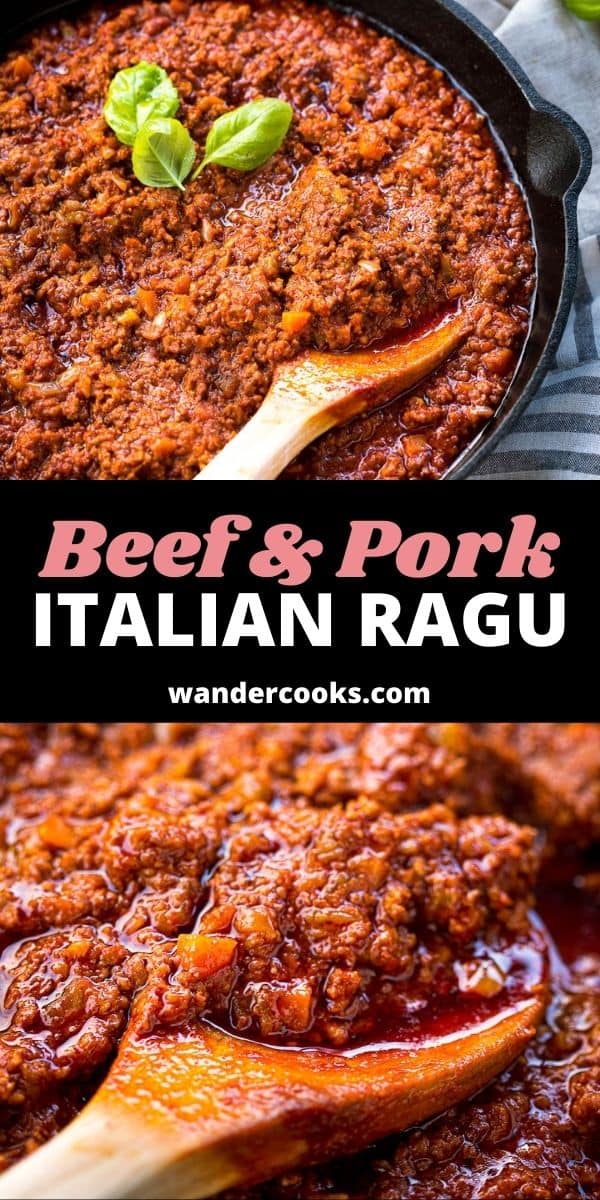
A rich, smoky and spicy Italian ragu pasta sauce with beef and pork, simmered down with spicy nduja salumi paste. Serve with your favourite pasta or use as a meat sauce pasta bakes or other tasty recipes.
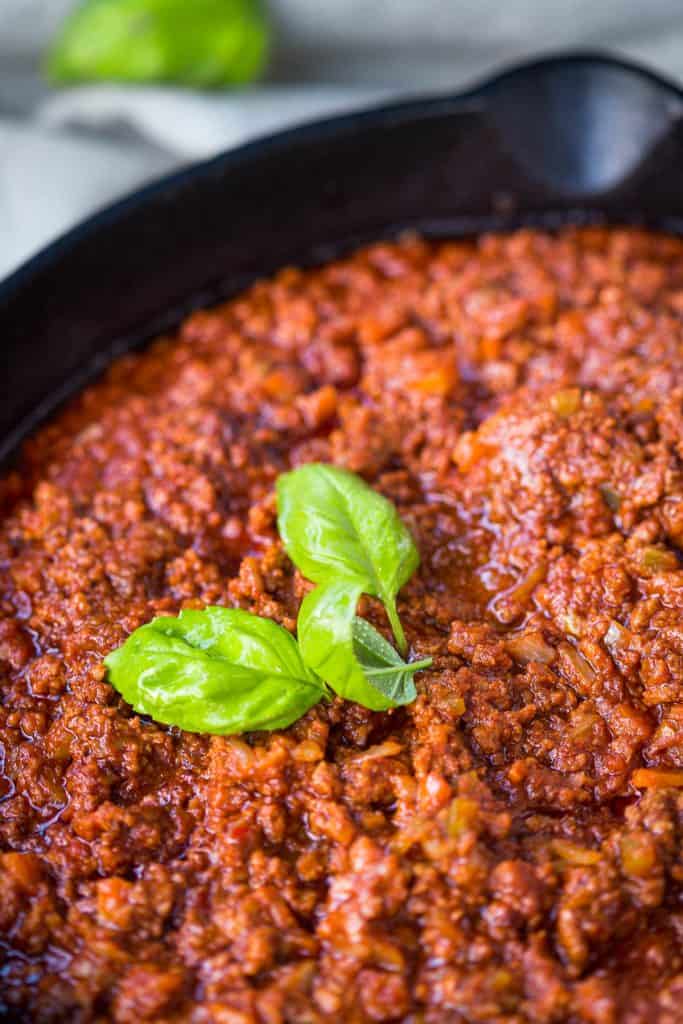
Why We Love This
This easy Italian ragu recipe pure comfort food that will warm you up from the inside out. Packed with flavour (and hidden vegetables), it calls for mostly simple everyday ingredients, with tingling heat from spicy nduja paste.
A great Sunday night dish, it's cooked slowly to allow plenty of time for all the delicious flavours to absorb into the meat. Minimal hands on time. You'll never want to buy store-bought pasta sauce again.
We guarantee this spicy, meaty Italian ragu is so satisfying you'll want to fill your bowl to the brim and eat it ALL. (Plus a little bit more, just because.)
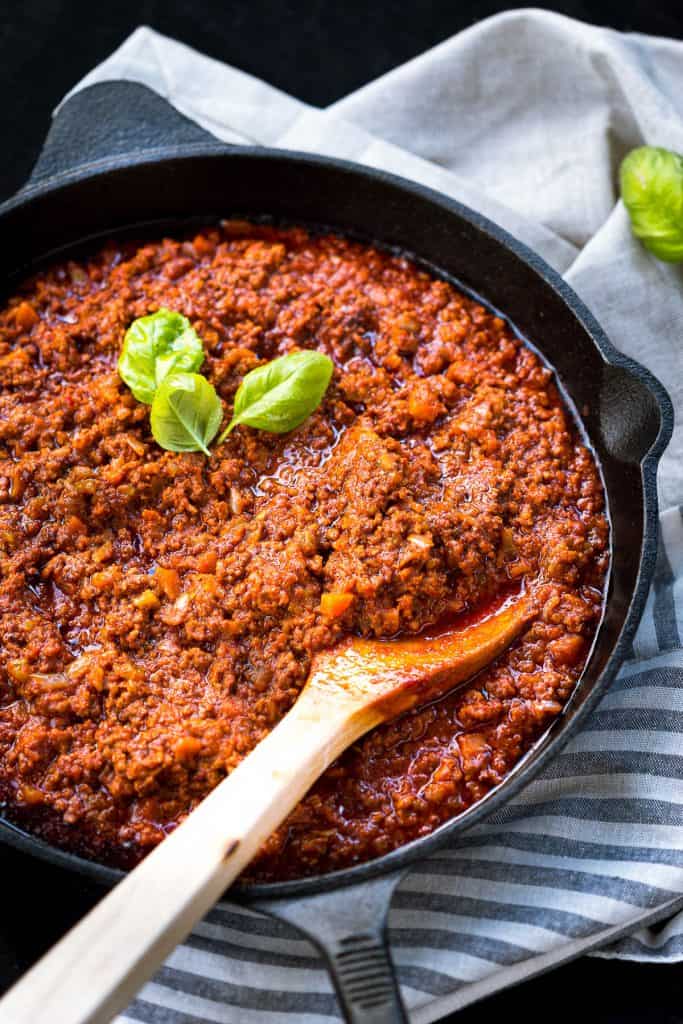
What is Italian ragu?
Italian Ragu is a meat sauce usually paired with fresh pasta. It's made from a mix of beef and pork mince simmered in pureed tomatoes, wine and a classic Italian soffritto (sautéed) base of finely chopped onions, carrot and celery.
There are almost endless variations when it comes to the ingredients used in ragu. The most famous version, usually called Bolognese or ragu alla bolognese.
A lot of ragu recipes are flavoured with stock, however, this recipe adds extra flavour and fiery heat from 'nduja salumi paste.
What is Nduja?
Originating in Calabria, 'nduja (pronounced DU-yah) is a spicy, smoky Italian salumi made from pork and roasted hot chilli peppers. It's so soft you can spread it with a knife, due to its high fat content (around 50%, compared to 20% in normal salumi).
On its own, 'nduja has a fiery enough kick to make you go running for a tissue. But when simmered down with the sautéed vegetables and mince, it adds a more gentle peppery zing.
Where We Learned This
Even though we were staying in a remote Japanese temple, enjoying temple life and making udon noodles with our feet, we were surrounded by travellers from all walks of life.
A freelancer like us, Marta was a digital nomad wandering across the northern hemisphere by motorbike. Hailing from Switzerland but with family roots in Italy, we were scrambling for pen and paper when she started talking about her favourite recipes from home.
This recipe was faithfully transcribed and includes lots of her tips and tricks to get it just right.
What You'll Need
- Beef & Pork Mince – Traditionally, Italian ragu is made with a mix of beef and pork mince. For the best flavour, Marta recommends 70% beef / 30% pork, but feel free to experiment. You can use all of one, or play with the ratios depending on your preference.
- Nduja Salumi Paste – A little goes a long way, so you'll only need around 100 – 150 grams for this recipe. You'll likely find it sold as vacuum-sealed slices of salumi or in a jar as a paste. If you can't find it at your nearest Italian market or import store, check out online sources like Amazon. Substitute with spicy salami, chorizo or Italian sausages (skin removed), or regular salami + chilli oil to taste.
- Pasta – We recommend tagliatelle or fettuccine, but you can use any pasta.
- Red Wine – Dry varieties like Shiraz or Cabernet work best. Don't worry about the alcohol content, as it will evaporate during the cooking process, leaving only flavour behind. Skip it if you prefer to avoid alcohol.
- Passata – This is a puree of uncooked tomatoes. It gives a lovely flavour and smooth texture to the sauce without being too watery. Substitute with canned tomatoes (same amount) or 2-3 tbsp tomato paste.
- Veggies & Herbs – We used onion, carrot, celery and garlic, which are common inclusions for bolognese-style sauces. Chop them super fine or use a food processor to make it easier. Garnish with fresh basil leaves.
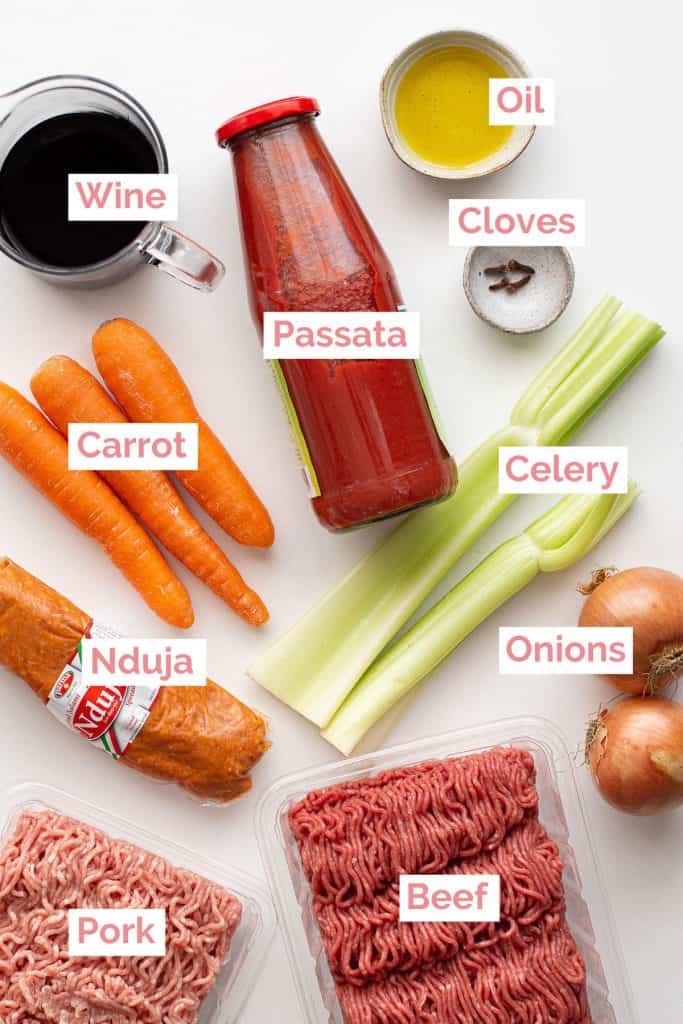
How to make beef and pork ragu:
-
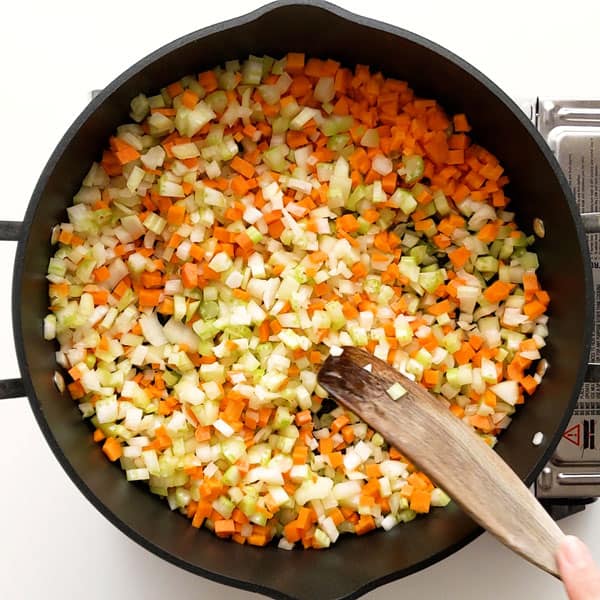
1. -
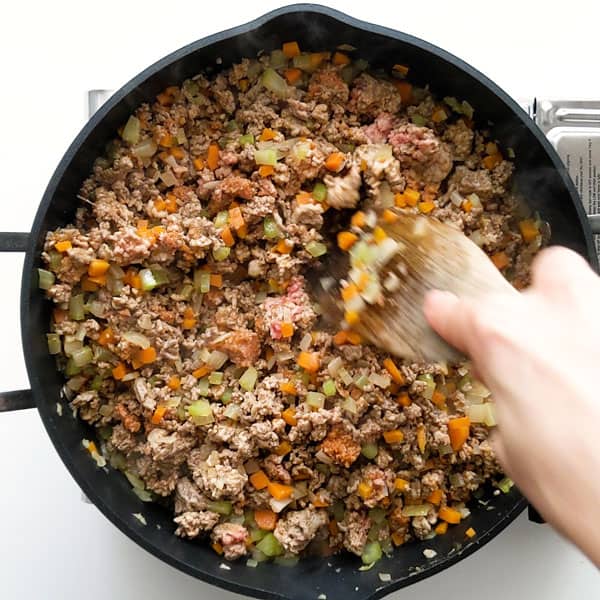
2. -
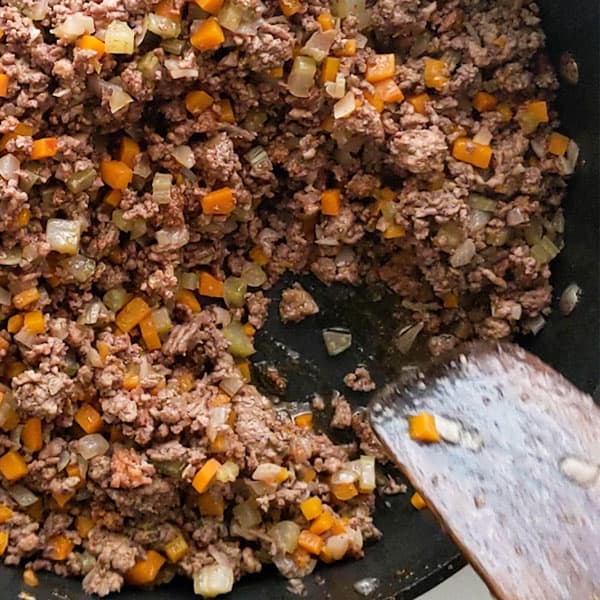
3. -
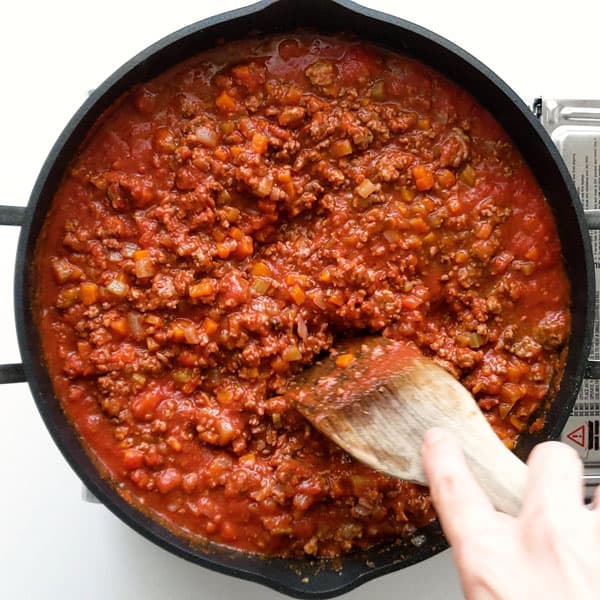
4.
- Grab your largest, deepest saucepan and get ready to cook! Heat theolive oilover a medium heat and throw in theonions,carrots andcelery. Toss them around to coat them nicely in the oil, and cook until the onion becomes translucent (around 3 – 5 minutes).
- Now turn add yourbeef and pork minceand stir stir stir to loosen and cook through. Add the nduja piecesand continue to cook. Don't worry, they'll soften and disappear into the sauce as everything cooks. Pour in thered wine and stir until mixed through evenly.
- Cook uncovered until all the liquid has evaporated (around 30 minutes), stirring frequently so nothing sticks to the bottom and burns.
- Pour in thepassata then season with salt and pepperand throw in thecloves. Stir once more so everything is nicely mixed.
- Lower the heat to a slow simmer and cook uncovered for 2 hours, stirring occasionally and tasting until you're happy with the flavour and consistency. Cook shorter for a saucier texture, or longer for a dryer ragu.
- Serve with al dentetagliatelle orfettuccini, and don't forget to sprinkle with freshly gratedParmesan cheese. Optionally garnish with freshly chopped basil leaves.
Wandercook's Tips
- Stir Regularly – This helps to stop the sauce from sticking to the pan. You can also add more water if it's starting to become too dry.
- Best Flavour – Eat this ragu the day after cooking. Serve with your favourite pasta and hot buttered bread.
- Cook the Pasta Al Dente – Cook your pasta for 1-2 minutes less than your packet directions for the perfect al dente bite!
FAQs
How long does ragu last?
Around 3-4 days in the fridge, if stored in a sealed, airtight container.
Can I freeze ragu sauce?
Yes you can! Portion out the cooked sauce to airtight containers and store in the freezer for up to three months. You can freeze cooked pasta as well, although the texture will be much better cooked fresh. Allow it to fully defrost before reheating.
What can I do with leftover 'nduja?
In Italy it's super popular to eat 'nduja slathered on crusty bread, or with a slice of strong, ripe cheese.
Try it with a smear of ricotta for a spreadable condiment / 'nduja sauce.
Pair it with scrambled eggs and fresh chives for breakfast, and sautéed it into home-fried potatoes
Use as sauce for Italian classics like pizza or lasagne.
Stuff chicken breasts with 'nduja and cream cheese and wrap in bacon then bake.
Get creative and use it for other cuisines like tacos, quesadillas or nachos with sour cream and guacamole.
Or If you want to make more ragu but not right now – just pop any leftover 'nduja in the freezer and thaw once you're ready to make another batch.
My ragu is watery, how can I make it thicker?
Cook it for longer, or if you're in a hurry, make a cornstarch slurry. Dissolve 1 -2 tsp of cornstarch in 2 tbsp of cold water then mix into your ragu. Viola!
Variations
- Quick Ragu Pasta Bake – Mix some cooked penne with mozzarella, parmesan and/or béchamel, top with ragu and an extra sprinkling of parmesan, then bake in the oven until parmesan is nicely brown. Otherwise try our chicken pasta bake if you're looking for something creamier.
- Shakshuka Style – Heat a dash of olive oil in a pan then add the ragu and warm through completely. Crack in a few eggs (1 to 2 per person), then continue simmering until eggs are cooked to your liking.
- Use in Stuffed Capsicums or Mushrooms – especially if you add pasta or rice to beef it up.
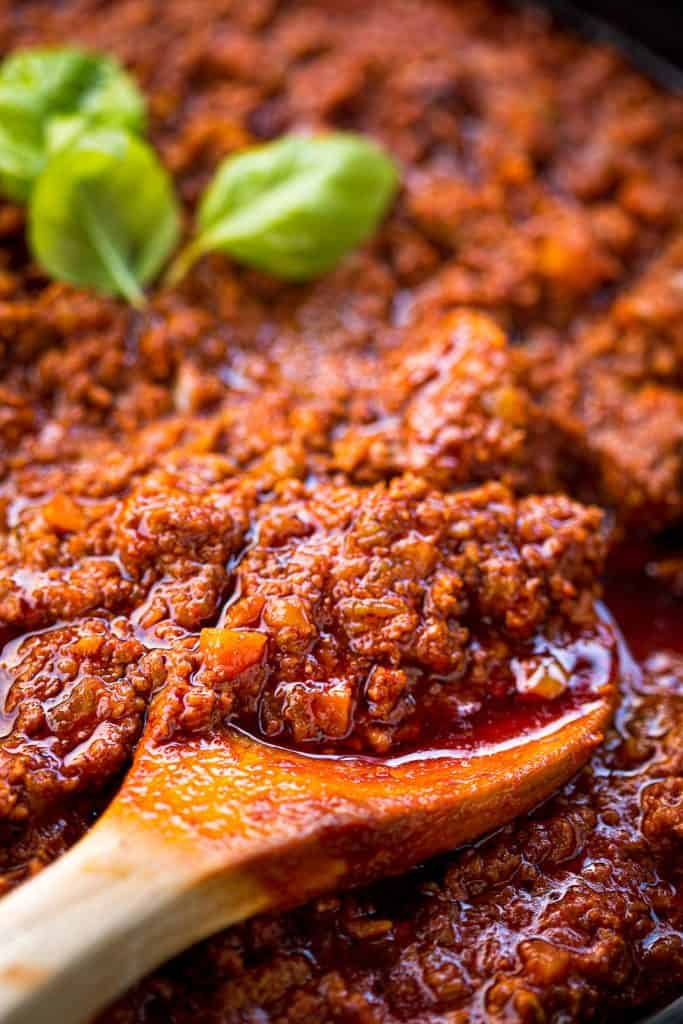
Italian classics like these are perfect for your next weeknight dinner:
-
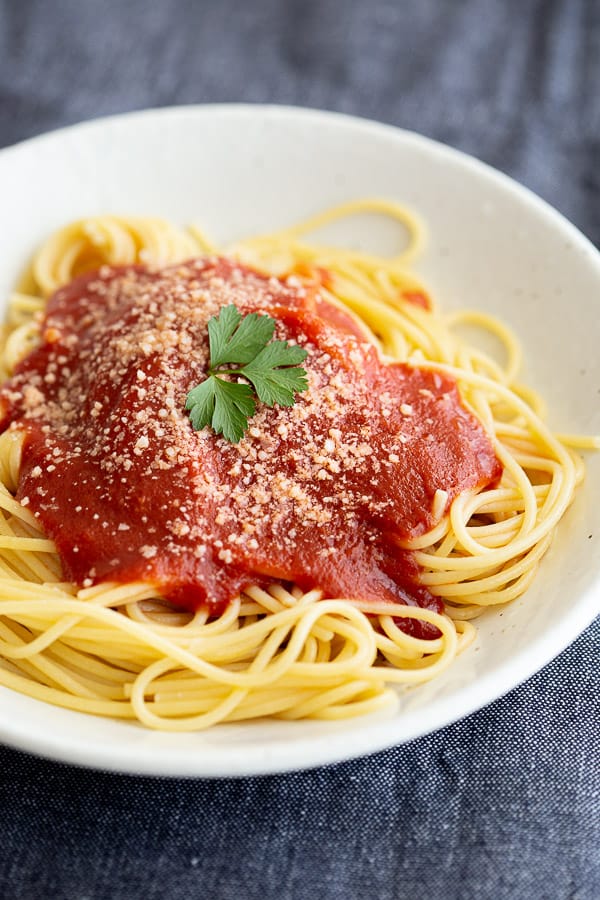
Napoli Sauce with Pasta -
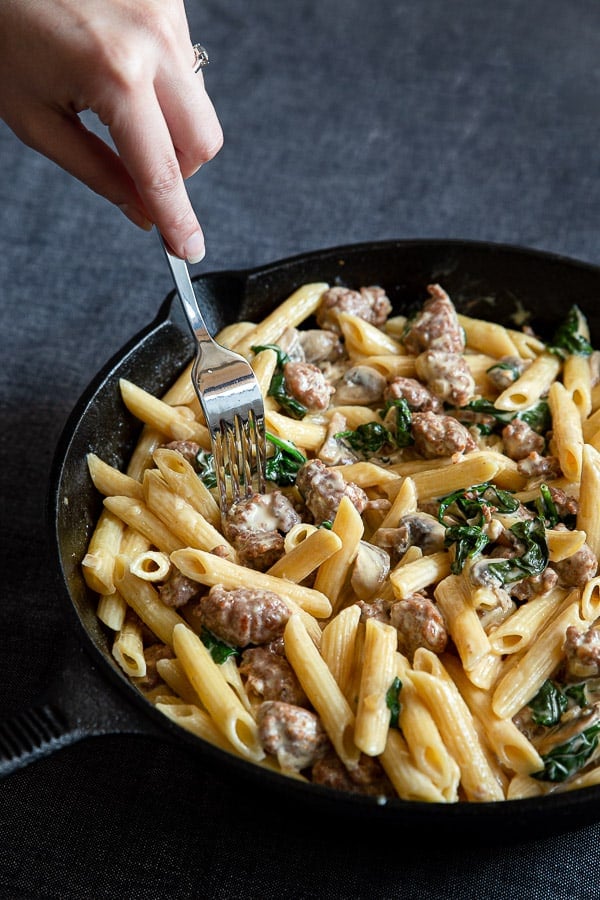
Creamy Sausage Pasta -
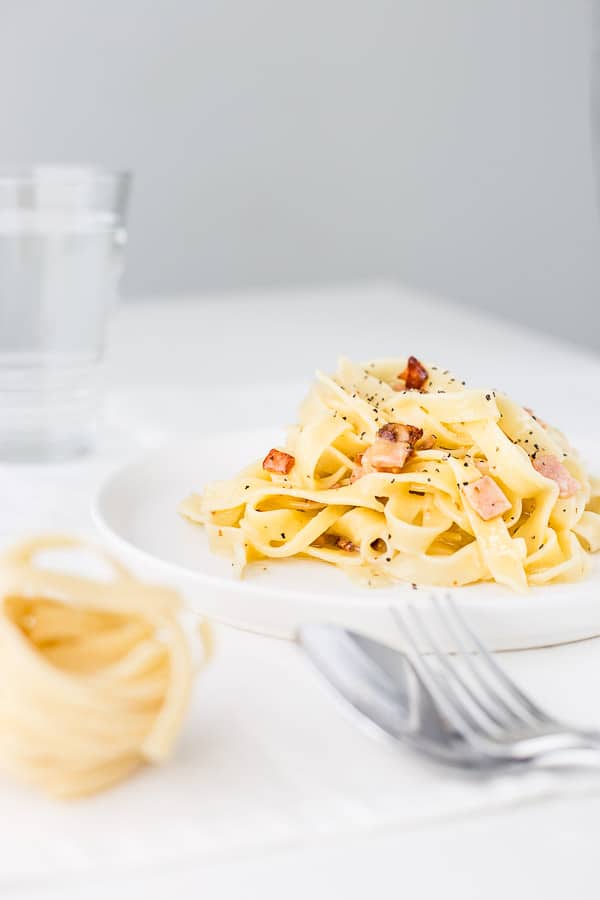
The Creamiest No Cream Carbonara Pasta -
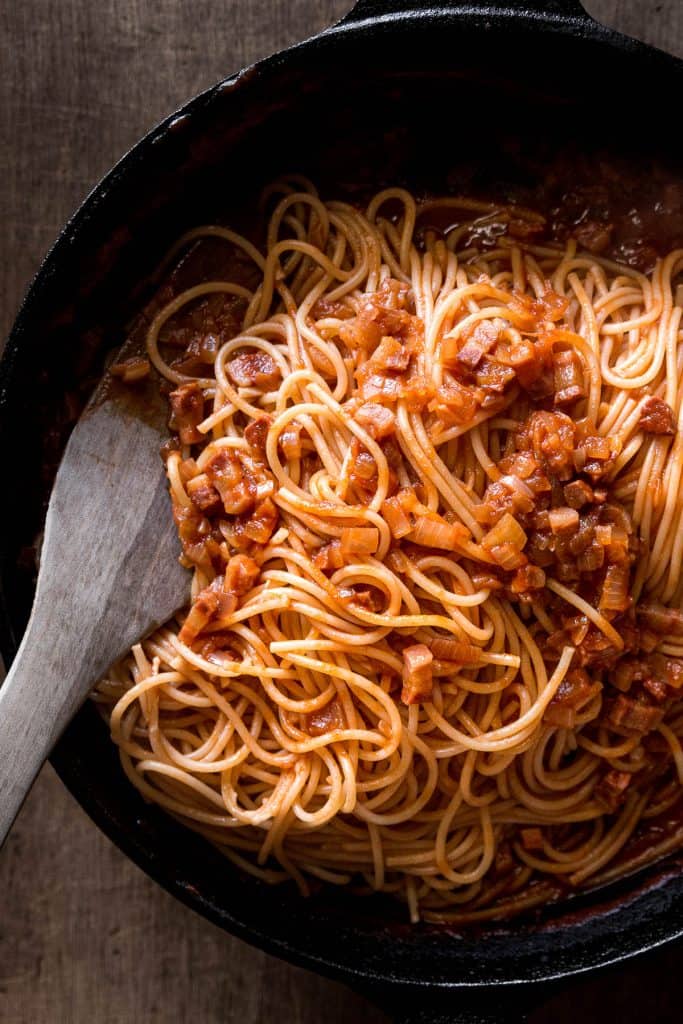
Chef Stefano's Bucatini all'Amatriciana Recipe
★ Did you make this recipe? Please leave a comment and a star rating below!
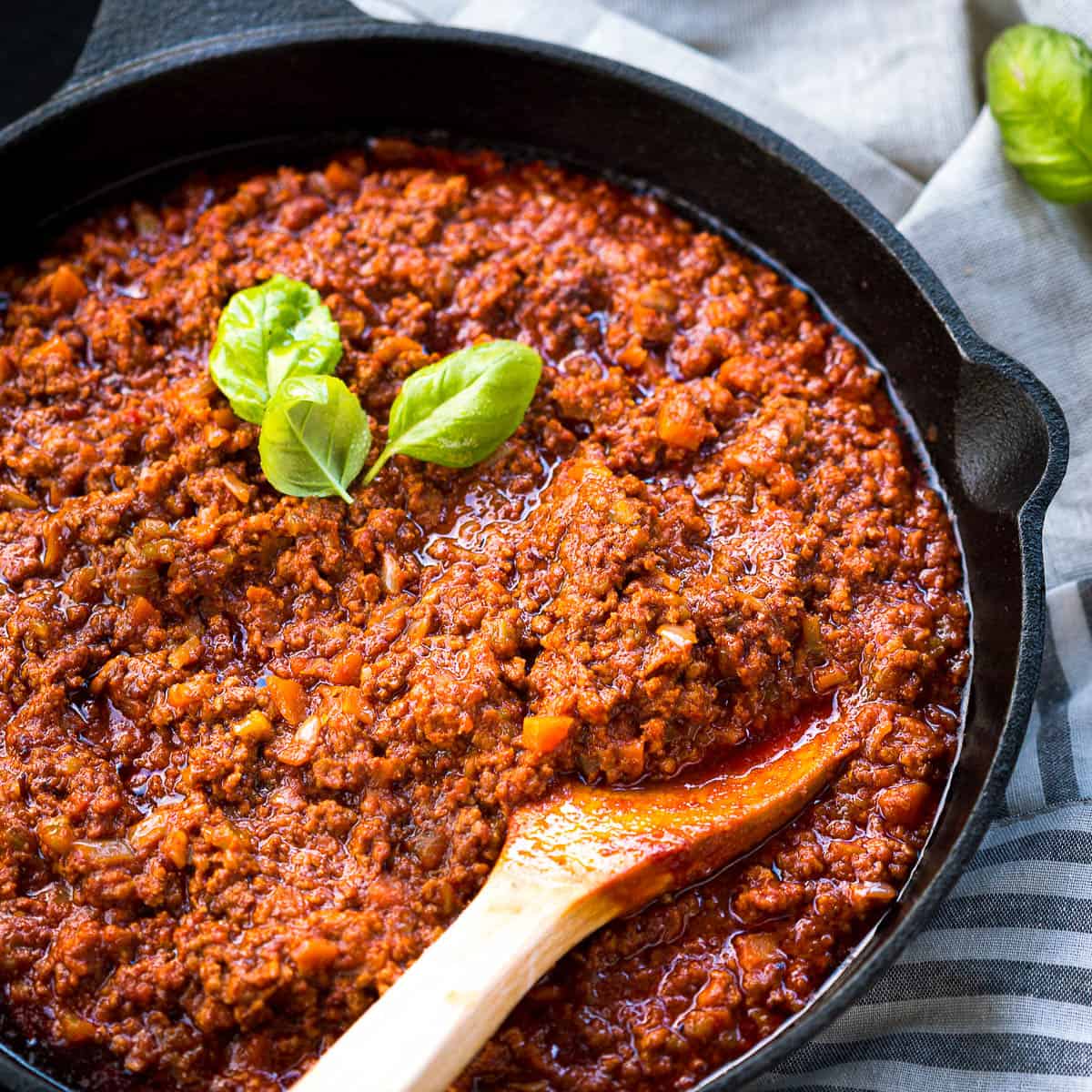
Servings: 6 serves
Calories: 633 kcal
Cost: $15
- 700 g beef mince
- 300 g pork mince
- 150 g Nduja salumi paste diced into pieces (5.3 oz)
- 1 cup red wine
- 3 carrots finely chopped
- 2 onion finely chopped
- 2 celery stalks finely chopped
- 1.5 L passata
- 4 cloves
- 2 tbsp olive oil for cooking
- Salt and pepper to taste
To serve (optional):
- pasta cooked, we recommend tagliatelle or fettuccine
- parmesan cheese for garnish
- fresh basil leaves finely chopped (for garnish)
-
Grab your largest, deepest saucepan and get ready to cook! Heat the olive oil over a medium heat and throw in the onions, carrots and celery. Toss them around to coat them nicely in the oil, and cook until the onion becomes translucent (around 3 – 5 minutes).
3 carrots, 2 onion, 2 tbsp olive oil, 2 celery stalks
-
Now turn add your beef and pork mince and stir stir stir to loosen and cook through. Add the nduja pieces and continue to cook. Don't worry, they'll soften and disappear into the sauce as everything cooks.
700 g beef mince, 300 g pork mince, 150 g Nduja salumi paste
-
Pour in the red wine and stir til mixed through evenly. Now cook uncovered until all the liquid has evaporated (around 20 minutes), stirring frequently so nothing sticks to the bottom and burns.
1 cup red wine
-
Pour in the passata then season with salt and pepper and throw in the cloves. Stir once more so everything is nicely mixed.
1.5 L passata, Salt and pepper, 4 cloves
-
Lower the heat to a slow simmer and cook uncovered for 2 hours, stirring occasionally and tasting until you're happy with the flavour and consistency. Cook shorter for a saucier texture, or longer for a dryer ragu.
-
Serve with al dente tagliatelle or fettuccini, and don't forget to sprinkle with freshly grated Parmesan cheese. Optionally garnish with freshly chopped basil leaves.
pasta, parmesan cheese, fresh basil leaves
- Nduja Salumi Paste – Substitute with spicy salami, chorizo or Italian sausages (skin removed), or regular salami + chilli oil to taste.
- Pasta – We recommend tagliatelle or fettuccine, but you can use any pasta.
- Red Wine – Dry varieties like Shiraz or Cabernet work best. Skip it if you prefer to avoid alcohol.
- Passata – Sub with canned tomatoes (same amount) or 2-3 tbsp tomato paste.
- Quick Ragu Pasta Bake – Mix some cooked penne with mozzarella, parmesan and/or béchamel, top with ragu and an extra sprinkling of parmesan, then bake in the oven until parmesan is nicely brown. Otherwise try our chicken pasta bake if you're looking for something creamier.
- Shakshuka Style – Heat a dash of olive oil in a pan then add the ragu and warm through completely. Crack in a few eggs (1 to 2 per person), then continue simmering until eggs are cooked to your liking.
- Use in Stuffed Capsicums or Mushrooms – especially if you add pasta or rice to beef it up.
- Stir Regularly – This helps to stop the sauce from sticking to the pan. You can also add more water if it's starting to become too dry.
- Best Flavour – Eat this ragu the day after cooking. Serve with your favourite pasta and hot buttered bread.
- Cook the Pasta Al Dente – Cook your pasta for 1-2 minutes less than your packet directions for the perfect al dente bite!
Nutrition Facts
Italian Ragu Recipe with Beef & Pork
Amount per Serving
% Daily Value*
* Percent Daily Values are based on a 2000 calorie diet.
We'd love it if you could give a star rating below ★★★★★ and show us your creations on Instagram! Snap a pic and tag @wandercooks / #Wandercooks

Source: https://www.wandercooks.com/martas-rustic-pork-beef-ragu/
0 Response to "Tagliatelle With Pork and Beef Ragu Recipe"
Post a Comment